PRESERVING A MILITARY LEGACY FOR FUTURE GENERATIONS
The following Reflections represents RM2 Darryl Cady’s legacy of his military service from 1966 to 1970. If you are a Veteran, consider preserving a record of your own military service, including your memories and photographs, on Togetherweserved.com (TWS), the leading archive of living military history. The following Service Reflections is an easy-to-complete self-interview, located on your TWS Military Service Page, which enables you to remember key people and events from your military service and the impact they made on your life. Start recording your own Military Memories HERE.
Please describe who or what influenced your decision to join the Navy.

In 1966, I was working at GE in Brockport, NY. I just purchased a small motorcycle. I had a 1957 Chevy and was having fun. I knew I would get drafted soon and was just waiting for that to happen. My dad was in the NAVY Seabees in WWII and kept telling me it would be better in the Navy than in the Army. My grandfather was in the Army in France during WW I. So, I grew up with my dad’s stories about his time in the South Pacific during WW II. I had it in my mind that the Navy would be better, but I did not like the idea of 4 years away from my family, friends, and girlfriend. So, I was going to wait for the draft. Then, one day in July 66, I ran into a friend from HS who had just joined the Navy. He said I should join him, and we could go in together and not have to go to Vietnam. We had already lost 5 or 6 guys from our HS in Holley, NY (8 altogether). So, I drove to the recruiter’s office in Batavia, NY, and signed up. I did not ask for any special training. It was a 120-day delay program, so we still got to enjoy the summer and fall. Then we got delayed a couple more weeks and finally left on November 22, 1966. That was my 19th birthday. That is how I started my time in the US Navy. Best thing I ever did.
Whether you were in the service for several years or as a career, please describe the direction or path you took. What was your reason for leaving?
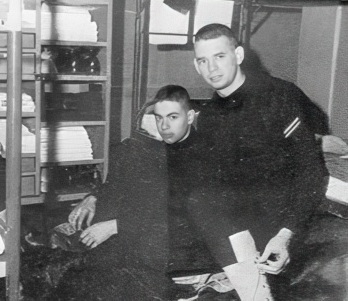
After my placement testing in Basic Training, I chose Aviation Electronics Technician, Aviation Structural Mechanic, and Radioman. My testing recommended me for a technical rating. I listed the aviation ratings because a guy at my hometown auto garage said it would be better to be on an Aircraft Carrier if I went to sea. I put in for Radioman only because I had a Navy Radioman teach me Morse Code in Boy Scouts. Of course, I got my third choice, which was fine with me. I thought it would be cool to be a Naval Radioman, and it ended up being a good choice. After seven weeks of Basic Electronics and Electricity School (BE&E), I had an 85% average. I was offered to change my career choice to Electronics Technician and go to a 9-month school instead of Radioman “A” School. The catch was that I would have to extend my active duty for two more years, for a total of 6 years. With my only being in for a few months, I decided not to go that way. I did think about it for several days. I was proud that I did so well in BE&E School and that I was asked, but I still wanted to be a Radioman. My next duty station was in Bainbridge, MD, and Radioman “A” School for 14 weeks. I was promoted to SN (E-3) during that time. Upon graduation, I was assigned to NAVCOMMSTA Greece, located near Nea Makri and Marathon, Greece, on the Bay of Marathon. After a short leave back home, three of us from “A” school, Eugene Bush, Ray Bollick, and I, flew to Athens, Greece, in August 1967.
Getting off the plane for the first time in a foreign country was exciting and, at the same time, strange. The landscape was much different than in Western New York. And the Greek architecture was much different. Cars were small foreign jobs and lots of motorcycles and motorbikes. We even saw donkeys pulling carts. We were picked up by an RM3 Base Driver and drove 30 miles to the base, going through the small village of Nea Makri, just south of the base. It was small, with low buildings made of metal siding. Our barracks were in an “H” shape, with cubicles holding four sailors in bunk beds.
I was assigned to The Message Center at the Radio Receiver Site. The Transmitter Site was across Marathon Bay at Kato Souli. Our receiver site was in an array of Vans. The long, narrow vans were divided into areas of responsibility. Our two vans held the base message center, fleet Orestes, CW Circuit seats (Morse Code), and the telephone control center. The Supervisor was in charge of The Message Center, Orestes, and CW. I was assigned to the Orestes Circuit section. We received messages (traffic) from fleet ships in the eastern Mediterranean Sea. I also practiced Morse Code using an Oscillator that played CW into headphones. When we were slow, I also sat with the CW Operator and copied code from messages he was receiving.
After a few months, I was put in the actual Message Center as a Write-Up Operator. I took base messages and transposed them to a roll of carbon-backed Teletype paper. I then used the carbon-backed paper to make copies for distribution to officers at the base. I progressed through all the jobs in the Message Center and was promoted to RM3 (E-4) in April 1968. I made RM2 (E-5) in November 1968. I was made Watch Supervisor at that time as well. We worked 8-hour watches, 24/7, with three days off between the different watches, usually 3-3-3 rotations. I also joined the base HAM Club and got my HAM license. We also ran the MARS. A system that allowed sailors to call home through a HAM Operator in the States and save money from making calls directly from Greece.
If you participated in any military operations, including combat, humanitarian and peacekeeping operations, please describe those which made a lasting impact on you and, if life-changing, in what way?
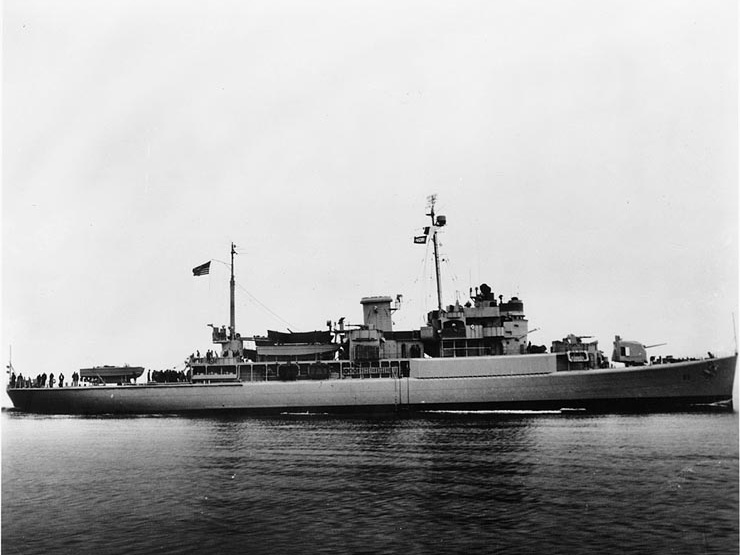
The first assignment at NAVCOMMSTA Greece in August 67 was making copies of all messages sent to and from the USS Liberty AGTR-5. In June 67, the Liberty was attacked by Israeli gunships and aircraft, with the loss of 34 sailors. That emphasized the importance of quickly and accurately handling message traffic from the fleet.
When I was with COMIDEASTFOR in 70 onboard USS Valcour AGF-1, an incident that could have escalated the same way, on our Red Sea cruise to Jeddah, we were met and sounded by Egyptian gunboats. We went to general quarters for the first time, which was not a drill. That lasted for about an hour. I was on a damage control team as a sound-powered radio operator, so I only heard the action going on topside. That put some things in perspective that anything can happen in the military, even though we were not in a combat zone like Vietnam.
Another unusual incident that caused an operational emergency was something that happened in Mombassa, Kenya. Sunspot activity knocked out all HF and UHF radio communications. The ship’s Captain’s AFRTS radio station would not even come in. So, all of our FSK Teletype circuits with NAVCOMMSTA Asmara (NKA) were down. Nothing was coming in or going out. We normally did not use our CW circuit (Morse Code) for normal radio messaging traffic. But that was the only circuit we could get to maintain communications with any other Naval ship or shore station. Most of our messages needed to be encrypted, and our Staff Chief did all that dirty work. This was in 1970, and most Radiomen on board were not very proficient in Morse code. I had extensive, but not inclusive, experience working in the Message Center/Ship to Shore section at NAVCOMMSTA Greece. We also had an older 1st Class in Radio with lots of experience. The both of us got on two frequencies and started sending our traffic to NAVCOMMSTA Asmara, our normal shore contact. Since all CW circuits are monitored by every Naval shore station, I heard my only duty station, NGR (NAVCOMMSTA Greece), looking for traffic. It was much further away, but I had a good 5×5 signal, so did send one message via NGR. It felt good to send the ‘ole NGR (Dah-Dit, Dah-Dah-Dit. Dit-Dah-Dit) that I was so familiar with. All messages were encrypted, so NGR did not know the origin of that message or that it was me. I most likely knew the CW operator at the other end.
Fifty years later, I still know Morse Code. You never forget.
Did you encounter any situation during your military service when you believed there was a possibility you might not survive? If so, please describe what happened and what was the outcome.
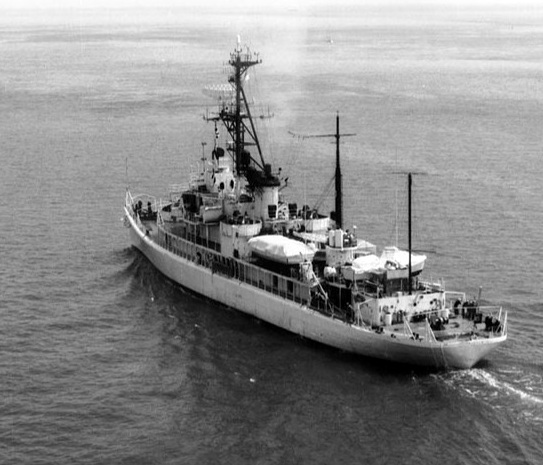
No, I did not.
Nothing happened in the Middle East (Persian Gulf, Red Sea, Arabian Sea, or the Indian Ocean in 1969-70. I guess the Egyptian gunboat activity in the Red Sea in 1970 could have gone south, but, at the time, I never thought about it. This was only three years removed from the Six-Day War between Israel and the UAE. We were on the way to Jeddah, SA, in the Red Sea, when we went to General Quarters, Not a Drill. Six Egyptian gunboats approached our ship, USS Vaclour AGF-1. As a Radioman, my GQ was as a Powered radio operator on a Damage Control Party in the Chief’s Mess. So, I never saw the gunboats but heard all transmissions. The gunboats kept circling the ship. We did not man the guns (20 mm and 40 mm AA), not that they could lower enough to hit anything on the water. This went on for about an hour. I don’t think we were in Egyptian territorial waters, but you never know. We had Spooks (CTs) on board, and they could have been monitoring Egyptian military radio. After an hour, the gunboats took off, and we secured from GQ and continued to Jeddah.
Of all your duty stations or assignments, which one do you have fondest memories of and why? Which was your least favorite?

My assignment to the Naval Communications Station at Nea Makri, Greece, was my first time out of the United States. It was so different to be in a country like Greece. The base was 30 miles northeast of Athens, on the Bay of Marathon near a small village called Nea Makri (New Market), and just south of the town of Marathon. The plains of Marathon, when the base was built, was the famous site of the Greek win over the Turkish in the Battle of Marathon and the story of the Marathon Runner. All the main buildings and barracks were metal walled and one story. We had the barracks, the small exchange, the mess hall, the administration building, the bowling hall, the BOQ for officers, and the EM club for the rest of us. There was a pool added during my last year. We had to walk about a half-mile to the Communications Station, with vans linked together. The idea was that if we needed to vacate in a hurry, they would just send in helicopters, pick them up, and take them to a ship offshore. I was assigned to The Message Center and Ship to Shore area. The Message Center was responsible for receiving and sending message traffic for the base. The Ship to Shore area had Orestes, which was a teletype network system with direct communications with small ships in the eastern Mediterranean Sea. The Ship to Shore also held the CW Circut, a Morse code circuit. I liked this area and started on the Orestes Circuit first. When not busy, I got to practice copying Morse code from our practice system. Or I could copy along with the CW Operator right off the Net. After six months or so, I was moved into the Message Center.
I started my rotation through the various work positions, eventually after 1 1/2 years, and with promotions in grade to Supervisor of the Watch. We worked eight or 12-hour watches, 2 or 3 days between each watch (Day, Eve, and Mid), with 72 or 80 hours off between rotations. So, that gave us lots of time to go to Athens or other parts of Greece. I especially loved going to the islands. I went to Hydra, Agiena, Andros and Mikynos. Most of my liberty time was spent in Athens at our favorite bars, the Plaka, Syntagma Square, and Dafini Wine Festival. I shared several off-base housing with other sailors. There was also a nice beach in the small village and a bar, “The Blue Lights.” At least, that is what we called it. I loved getting a souflaki on a stick or in a pita. Except when on day trips, I ate at the mess hall most of the time. There was also a small grill in the EM club for short-order meals. There were bands and dancing (if girls from the area came on base) on weekends. A friend of mine met and dated a Greek girl from the area and then fixed me up with her girlfriend.
So, I dated her for a few months. She would come to the base and ask for me when I was available. She would be gone for months back to Athens but then reappear, and we would date again. Toward the end of my tour, I met a girl from Wales who was going to school in a suburb of Athens. We dated her for seven months. She moved to Tehran, and I lost track of her. The great weather, food, scenery, the nice little village of Nea Makri and the islands, and the girls I met made this my favorite duty station. I like my job as a Naval Radioman working in the Message Center, occasionally sitting the CW (Mose Code) circuit and copying traffic. I made rate from E3 to E-5 at this time.

While in the enlisted barracks, I joined the HAM Radio Club, which had a room in the back. I studied for and took my HAM License test. When I got my HAM callsign, I spent hours in the HAM shack contacting other operators via the CW (Morse code) frequencies. I also helped improve the HAM shack. I learned how to bring up the 1000w WRT-1 Navy transmitter that was given to the Club. Most HAM operators only had small transceivers going from 5w to 50w. We also had a rotating antenna on a 20′ pole outside the barracks. Most Hams had smaller stationary antennas or even just a long wire going from their house to a pole or tree. I also applied for a Greek HAM license, so I had a Greek HAM callsign that was different from my US call sign. I only had a Novice license, so I could only work the CW frequencies. My callsign was WN2FFX. The “N” designated me as a Novice, and I could not use the voice frequencies. When I got my Greek callsign, SV0WH, there was no indication I was a Novice so that I could use the voice circuits as well.
I received and sent 100s of QSL (HAM contact) cards. Our Club also logged onto the MARS (Military Auxilary Radio System) to help fellow sailors call home at a less expensive cost than regular telephone calls from Greece to the US. This was all before cell phones, the Internet, E-Mail, Texting. We would contact a HAM operator in the US, as close to the sailor’s hometown. Then, HAM would make a “collect:” call to the sailors’ homes. Then, his family would only pay the charges from their home to the HAMs base. Because of the time difference, we did this between 1 a.m. and 2 a.m. Greek time.
Because I liked Greece so much, I requested and received a six months extension. This made my tour of duty for 24 months. In December 1968, I was invited to a New Year’s Eve party at the home of an American girl in one of the suburbs of Athens. I had gone on one date with her a few months earlier, but now she was dating another sailor from the base. My friend Paul was dating another American girl who lived next door to her. There were two single girls there. I was talking to one when I heard the other girl with a strong British accent, which drew my attention to her. I talked and danced with her the rest of the night and subsequently started dating her in early 1969. My friend Paul broke up with his current girlfriend and started dating my girlfriend’s friend. This led to my friend Paul and I getting an apartment in downtown Athens. I dated her until July 1969, when her family moved to Tehran, Iran.
I finished my Greece tour in August 1969 and left for a 30-day leave home. My next duty station would be on the admiral’s staff of The Commander of Middle East Forces (COMMEASTFOR) onboard the USS Valcour AGF-1, homeported in Manama, Bahrain Island in the Persian Gulf.
From your entire military service, describe any memories you still reflect back on to this day.
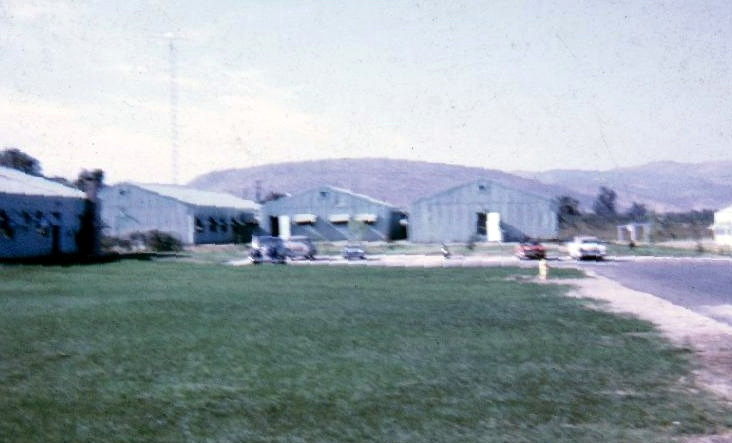
When stationed at NAVCOMMSTA, Greece, I worked in the Ship-To-Shore area with the ship-to-shore system called Orestes. We communicated directly with ships in the eastern Mediterranean Sea via the teletype system. We received messages that we gave to our Message Center for correct routing to other Naval stations and commands. This area also was where the CW (Continuous Wave) or Morse code circuits were located. I would copy CW behind the CW Operator on the watch that night. We also had an oscillator machine for CW practice. Although I was proficient in CW, I never had direct duty on the CW circuit. But, later in my time at NCS Greece, when I was Supervisor of the watch in the Message Center, I relieved the CW Operator for breaks and lunch, always hoping for a ship to call with a message to be sent. We took many messages from USNS Merchant Marine ships and US Navy submarines (always encrypted in 5-letter “word” sets”), which were the only ships still using CW as their primary communication system. All other US Naval ships used the teletype communication system to send and receive messages. After my first few months in Ship-to-Shore, I was moved to The Message Center, which was actually right next to Ship-to-Shore. Later, they were combined under one Watch Supervisor. I enjoyed the several positions at the Message Center, working my way up my rate from Seaman (SN) to RM3 and RM2. Making and wearing the “crow” was a special honor for the enlisted sailors. I loved the position of the Message Center Router. This person assigned routing codes for each ship, station, or command to every message going through The Message Center. This ensured the correct delivery of every message. On my days off, usually 3 or 4, I visited several Greek Islands. Mikonos was my favorite. And I spend much time in Nea Makri at the beach or in one of my many apartments. A bus left the base each evening for Athens and returned at 11. Or if we were off during the day, we just took a Greek bus or caught a ride with one of the guys in a car. We had our favorite bars, restaurants, and areas like The Plaka and Syntagma Square or the Dafni Wine Festival. I also had a couple of girlfriends while stationed here as well, which made it that much more pleasant duty station.

While on my ship, the USS Valcour AGF-1, on our India cruise, coming into Bombay (Mumbai now), the port authority only communicated with incoming ships via CW. Luckily, I was on duty as a Circuit Controller on the day watch. We were told to monitor the 500Khz frequency. So when I heard our callsign, I immediately responded. The message was for our ship to dock at a different pier than the original. I took my typed message to the bridge and gave it to the Captain. He asked me how the message was transmitted, and I told him CW. He was wary of making the change because the message came in via CW (Morse Code). I guess he did not trust my code-copying skills. So, he told me to go back and verify. I did so and took it back to him, hoping to God that I had indeed copied it right. (Knowing that I did) Not many other radiomen had much experience with CW in all of our radio crew.
Another time my CW skills came in handy was in Mombassa, Kenya, when sunspots took out almost all radio HF communications. We lost complete contact with our central station at Asmara, Ethiopia. Only myself and an RM1 Ship’s LPO were experienced enough to start sending all message traffic via CW. Most went directly to Asmara (NKA), but I heard my old station in Greece (NGR) looking for traffic, so I sent one message to them. Another memory was when we ported in Misawa, Ethiopia, and we got a few days off to travel by bus to the Naval Communications Station in Asmara. Since there was a rebellion from the Eritrean rebels. So, we had two trucks from the Ethiopian Army to escort us to the base. When we stopped at a rest stop, they all got out with their automatic weapons and went up the side of the hills to protect us from any rebels. Luckily, none were in the area, and we had an enjoyable time on our visit. I even remember playing golf on the base golf course. Because of the arid terrain, the “greens” were made of small pebbles. It’s very weird, but few people can say they played golf in Ethiopia. We also bowled in Saudi Arabia at the Gulf Oil Complex at Kanoor Rastunara. My favorite port was Victoria, The Seychelles Islands. Just 500 miles from Bombay and just south of the equator, it was a tropical paradise, especially after going through my Shellback crossing the line initiation. One night, I did not return to the ship as required without a special request chit, and I slept on the beach. I just reported back on after quarters the next day.
What professional achievements are you most proud of from your military career?
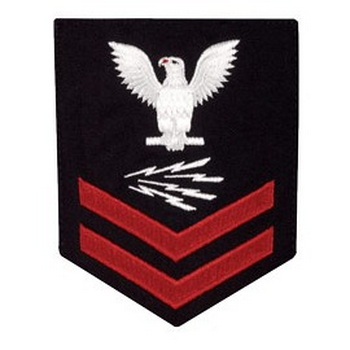
I was moving from RMSN to RM3 and RM2 to become the watch supervisor at NAVCOMMSTA Greece within two years. Learning Circuit Controller duties with COMIDEASTFOR onboard USS Valcour AGF-1. Getting fairly proficient in CW (Morse Code) and sitting the CW circuit for short periods as relief for the CW operator. Once, while in Mombasa, Kenya, in 1970, sunspots caused all but the CW circuits to go down. Only RM1 and I were proficient enough to send CW well enough to send our message traffic. Learning every aspect of a shipboard radio shack, especially Circuit Control, was very important to me and my self-esteem; at the same time as I was assigned as Watch Supervisor, the sailor on my watch who was assigned as Circuit Controller told me not to worry about any of his duties or expertise. I felt that as a Watch Supervisor, I should know every position in the Radio Shack that I was responsible for.
I was able to learn all aspects of the Circuit Controller. This included the encryption order wire communications with Naval Communications Station Asmara, Ethiopia; tuning transmitters (although I had learned on an order WRT-1 transmitter in the Ham Shack at NCS Greece; the patchboard, and R-390 Receivers looking for clear frequency channels. We also had to use the voice circuit communications gear to contact Asmara and some ports upon arrival. In addition to this duty, I made a point to learn other Radio Shack duties, such as Fleet Broadcast, Write-up, and Orestes for teletype message receiving and sending. We were also responsible for equipment maintenance, such as cleaning all radio equipment, including antennae insulators on the ship’s superstructure. We had to hang off the side of the ship at the lookout position and climb the upper structure to get to some antennae access – my insistence on learning the Circuit Controller duties paid off for me a few months later. In early 1970, the USS Valcour had “War Games” off the coast of Bandar Abbas, Iran, with the British and Iranian Navies. During these “games,” the ships maneuvered and sent many test messages via teletype. One such message was coming in during my midnight watch, and the radio frequency channel had deteriorated, making the reception difficult. As Supervisor of the watch, I was helping the message operator receive a readable “Flash” (The highest priority message) before taking it down to the Officer of the Day. The bad frequency resulted in a garbled message which required multiple transmissions. After piecing together several receptions, we decided the message was complete enough for the OD to read and understand. The problem was in the process of ensuring a completely readable message; we had enough of the message 2 or 3 minutes before our final one. The Admiral Staff Communications Officer was informed of this delay in getting the message to the OD. Because of this error and the importance of speed, I was removed as Supervisor of the watch and assigned to another watch section as the Circuit Controller. I enjoyed this more hands-on duty much better than the Supervisor of the watch. I did maintain my rank at RM2 during this transition. I was in this position for the rest of my time on the ship.
Of all the medals, awards, formal presentations and qualification badges you received, or other memorabilia, which one is the most meaningful to you and why?
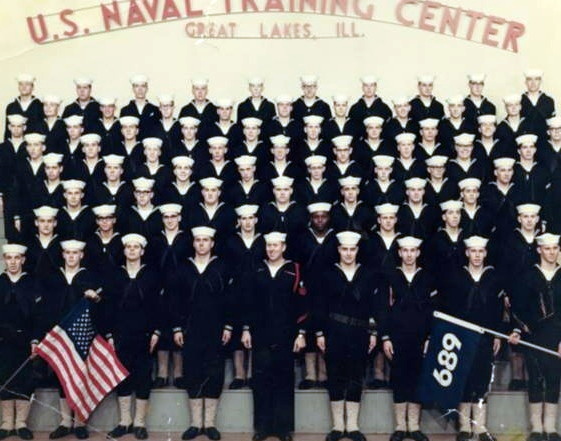
I was in from 1966 to 1970 but never served in Vietnam, so I only received my National Defense medal. I did not serve a full four years because I got an early release to attend college in August 1970. So, I never received my Good Conduct Medal. Over the years, the Navy issued Good Conduct for three years of service. After checking further, this did not apply to my time in the service. In my research, I did find that if you were released early but within the last three months of your Navy 4-year contract, you could be eligible for the Good Conduct Medal. Since I served three years, nine months, and nine days of active duty, I thought I would qualify and applied for an exemption with the Naval Records Administration, and I was awarded my Good Conduct Medal in 2019.
During this year, 2019, my American Legion Post was doing a national Vietnam War Commemorative award program to recognize all veterans who served during the Vietnam War. We are all considered Vietnam War Veterans whether or not we actually served in the Vietnam Theater. During one of these ceremonies, my brother, Evan (EM-3, 70-74), gave me my Good Conduct Medal. Not a big deal for all the guys who served and died in Vietnam, but it meant something to me for my service. We lost eight boys from my high school during that war, and I remember each and every one of them.
Which individual(s) from your time in the military stand out as having the most positive impact on you and why?
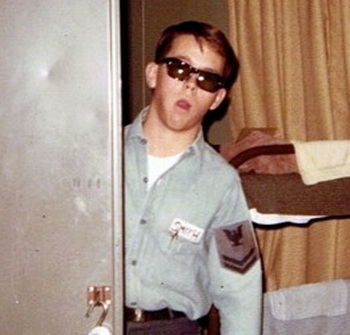
RM3 Pruitt was the Router of the Message Center at NAVCOMMSTA Greece. He was very knowledgeable and professional. Made few, if any, mistakes and inspired me to do the same. Joel Roberson, my CW Operator on my watch at NAVCOMMSTA Greece, for being a very dedicated and efficient operator who loved his job. RM2 Paul Smith for always having a positive, can-do attitude. What he accomplished still amazes me.
List the names of old friends you served with, at which locations, and recount what you remember most about them. Indicate those you are already in touch with and those you would like to make contact with.

Paul Smith, Bill “Goody” Goodwin, Bill “Rock” Hudson, Bill Mc Crea, Jon Cuneo, and John Martinsen worked on the Lo-Comm Relay area. Harald “Frenchy” French, Tom Blackburn, Denny Mc Clain, and Bill Lawrence worked in Hi-Comm Relay. Joel Roberson worked in CW Ship-To-Shore. Bob Gray, RM3 Pruitt, RM2 Clevenger, RM2 Nerk, and RM1 Tallion worked in the Message Center. John Fink worked in Circuit Control. Jason Gullion was on my watch, and Paul Smith, CYN3, became RM2 in under 1 1/2 years. Paul and I had several off-base apartments. One was in Athen. Bill Lawrence, Bill Jones, Bill Dupre, Hank Anderson, Denny McClain, Jim Martin, Mike Orether, Scicatano, RM2 Cooney, Lt. Demitrius, Lt. JG Mise, RM3 Pruitt (MC Router), RM2 Nerk (my first Supervisor), RM2 Clevenger (later Supervisor), RM2 Perry were a few more that I remember from NAVCOMMSTA GREECE.
Bill Grenier and Mike Golden with COMMIDEASTFOR. One sailor who showed how a shipboard radio shack runs was Doug Sawin, my Circuit Control Operator when I was Watch Supervisor. After I was removed as watch supervisor and placed on another watch as Circuit Controller, I already knew the duties. My watch supervisor was RM2 Smith. Others in our command are RM1 Melburn (Lead PO), Chief Rivera(Ship’s Chief), Chief Welker (Staff Chief), Lt Jr. Savage (Ship’s Comm Officer), LTC McCann (Staff Comm Officer), CPTN Cole (Chief of Staff), ADM King (COMMIDEASTFOR).
Can you recount a particular incident from your service which may or may not have been funny at the time but still makes you laugh?
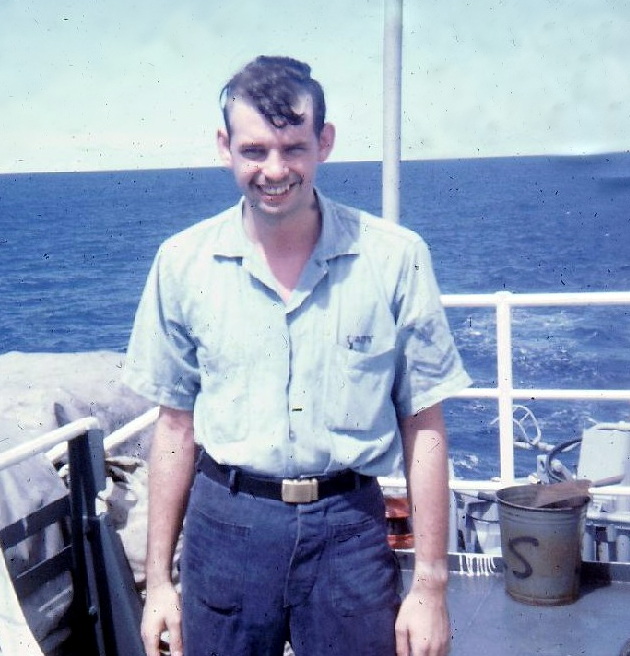
Crossing the equator in March 1970 in the Indian Ocean on the way from India to Seychelles Is. We had the Navy tradition of initiation from “Pollywog” to “Shellback” upon crossing the equator. This ceremony admits the sailors into the “Court of Neptune.” This started with many crazy and nutty things we were made to do, like get the Royal Haircut (see picture), kiss the Royal (Greased) Belly, jump into a garbage pit, and stand silly watches. One was standing on the ship’s forecastle (bow of the ship) with a broom and “Sweep the Horizon.” Many sailors dressed in different and funny costumes while initiating the inexperienced sailors. We had to crawl threw a gauntlet of sailor “Shellbacks” and got hit in the butt with Shillelagh (cut pieces of fire hose). We also had to eat very spicy food. When we were anointed “Shellbacks” at the end of the day, we had a great steak dinner cooked on the fantail (back of the ship).
What profession did you follow after your military service, and what are you doing now? If you are currently serving, what is your present occupational specialty?
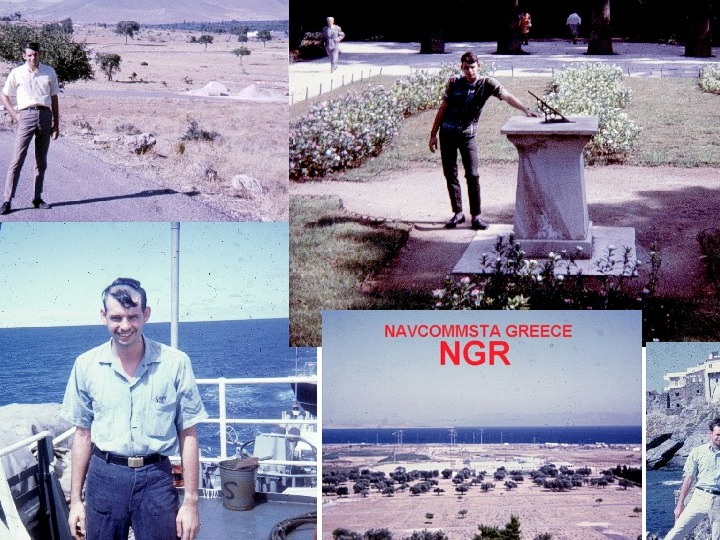
I got discharged three months early in 1970 to attend community college for Data Processing. From there, I was a computer operator for 17 years. I transferred to our company (Kodak) bank, Eastman Savings and Loan, in 1989 (Later ESL Federal Credit Union). I retired in 2005 after leaving on disability (heart disease) earlier that year. I joined The American Legion in 1993 and am still very active.
What military associations are you a member of, if any? What specific benefits do you derive from your memberships?
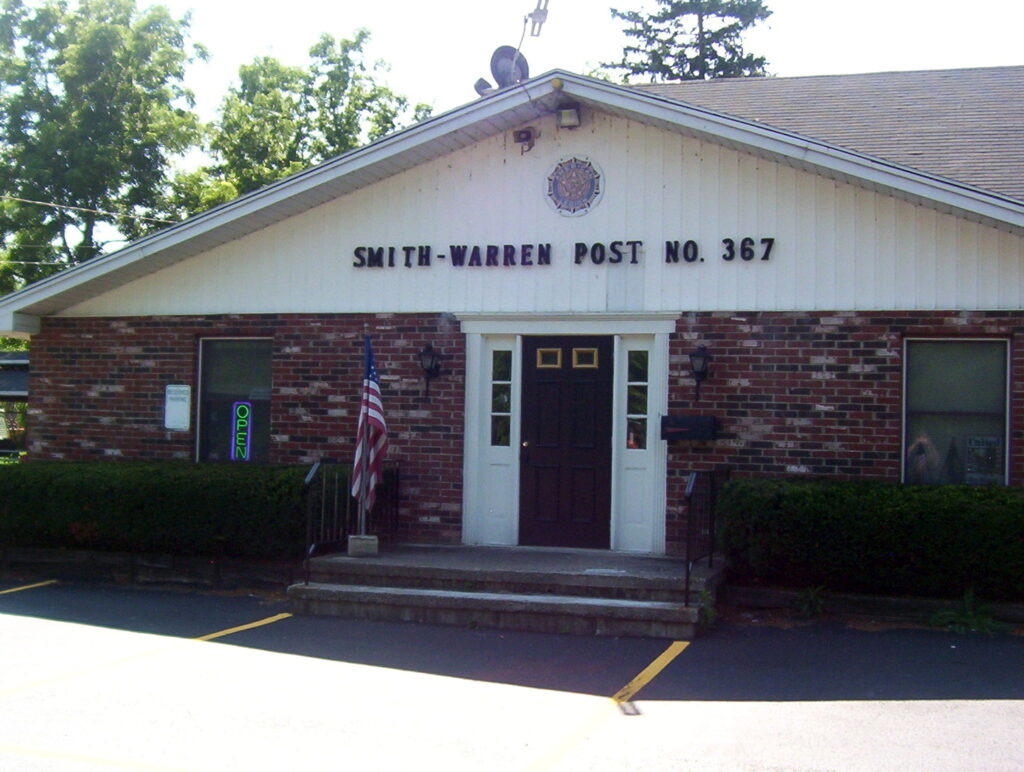
The American Legion since 1993. Met a lot of great lifelong friends. I worked my way up the ranks from 3rd Vice Commander to Post Commander. I was served as Post Commander twice, Treasure, Sgt at Arms, Historian, and currently Adjutant and Membership Chair. This gave me purpose and many friendships. The Post Home is a nice place to go and socialize.
I was also very involved in running or helping with our many fundraisers and community events. I have helped run our annual Memorial Day for 30 years. I volunteered as the Club Bar Tender for 30 years. I was also elected to the Board of Directors and served for over 20 years, many as President of the Board.
I have written several NYS grants for projects at our Post Home, including the one in 2023 to replace our parking lot with a $75,000 grant from New York State Veteran’s Affairs. I am a Past President of our Board of Directors and still advise our current members. I sell American flags to the community as well as memorial bricks for our Memorial Walkway to our Gazebo in our Veterans Memorial Park. I was also on the Post Color Guard for 25 years, 10 of them as Sgt. of the Guard. 2019, I was awarded “Monroe County Legionnaire of the Year” and “NYS District 7th Legionnaire”. Our town Lions Club was also awarded the “Robert J. Upton” award for my involvement with the legion and my community.
My association with the American Legion has also led to my involvement with our local village and town governments, where I help with various community events.
In what ways has serving in the military influenced the way you have approached your life and your career? What do you miss most about your time in the service?
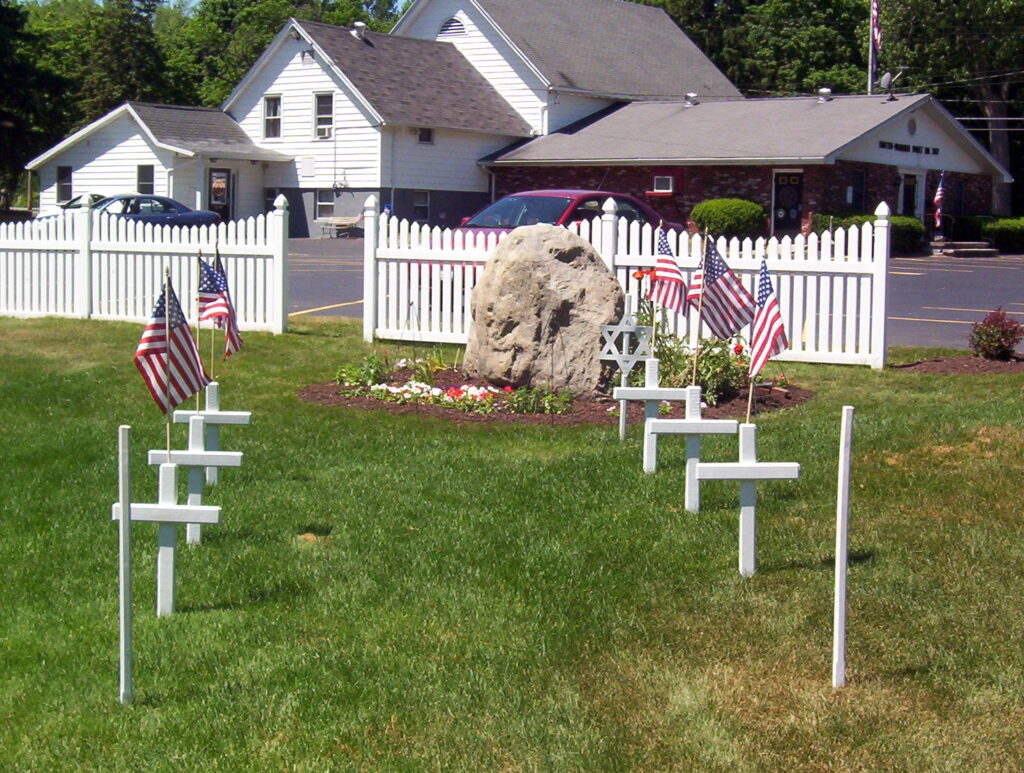
Dedication to my job and my community. I am very patriotic and particular with all things having to do with the military and with veterans. I have respect for the hierarchy of the business world in my supervisors and managers, which was instilled in me during my service time.
I miss the technical expertise needed to perform my duties. However, my experience kept me interested in technology, leading me to data processing and computers, always looking to increase my knowledge. I also miss all my shipmates and the camaraderie that we shared.
I liked the strict structure of military life, with the many protocols, procedures, and regulations.
Traveling and living in foreign countries was a great adventure not enjoyed by most people.
Based on your own experiences, what advice would you give to those who have recently joined the Navy?
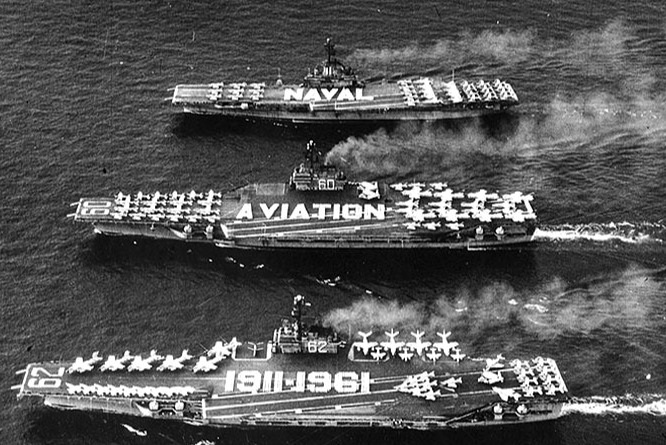
Do your duty with honor and integrity. Learn everything you can in your rating. Take advantage of Navy Schools and correspondence courses. Remember the importance of your service to the defense of our great country.
Enjoy the travel that you will experience, and do not take it for granted. Remember that you are representing America when interacting with those from other countries.
In what ways has togetherweserved.com helped you remember your military service and the friends you served with?
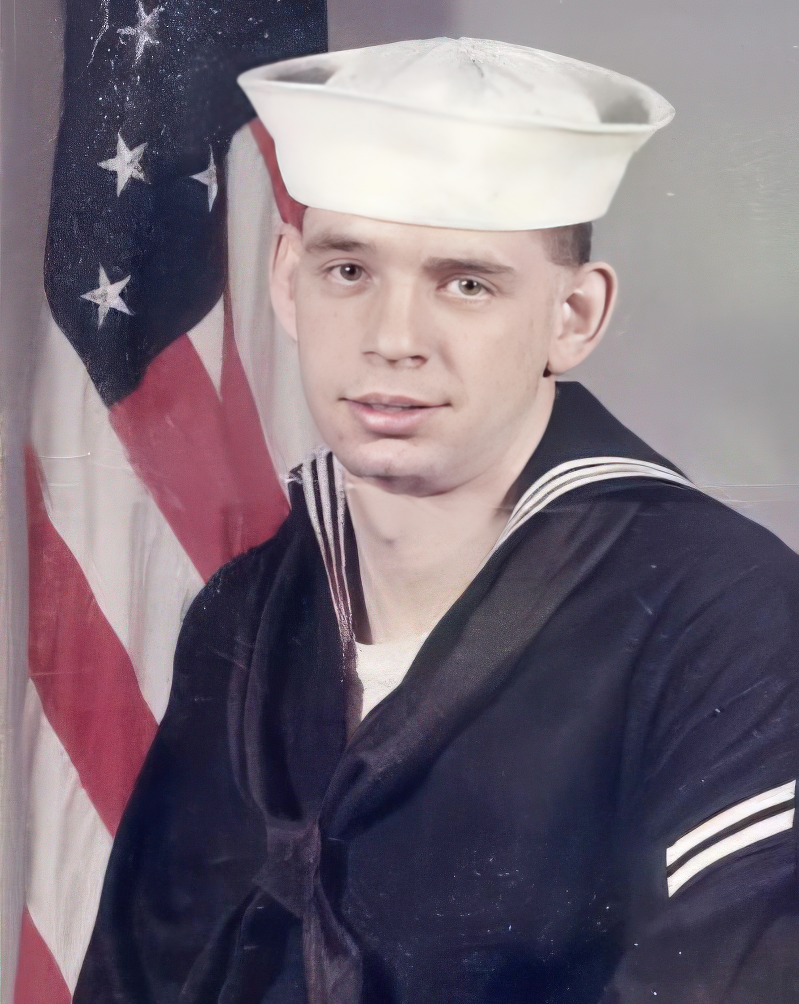
Reading the many reflections always reminds me of my time in the Navy. Through TWS, I have met many other shipmates, some of whom I did not know while at my duty station or ship. I have enjoyed sharing my Navy information and memories.
PRESERVE YOUR OWN SERVICE MEMORIES!
Boot Camp, Units, Combat Operations
Join Togetherweserved.com to Create a Legacy of Your Service
U.S. Marine Corps, U.S. Navy, U.S. Air Force, U.S. Army, U.S. Coast Guard
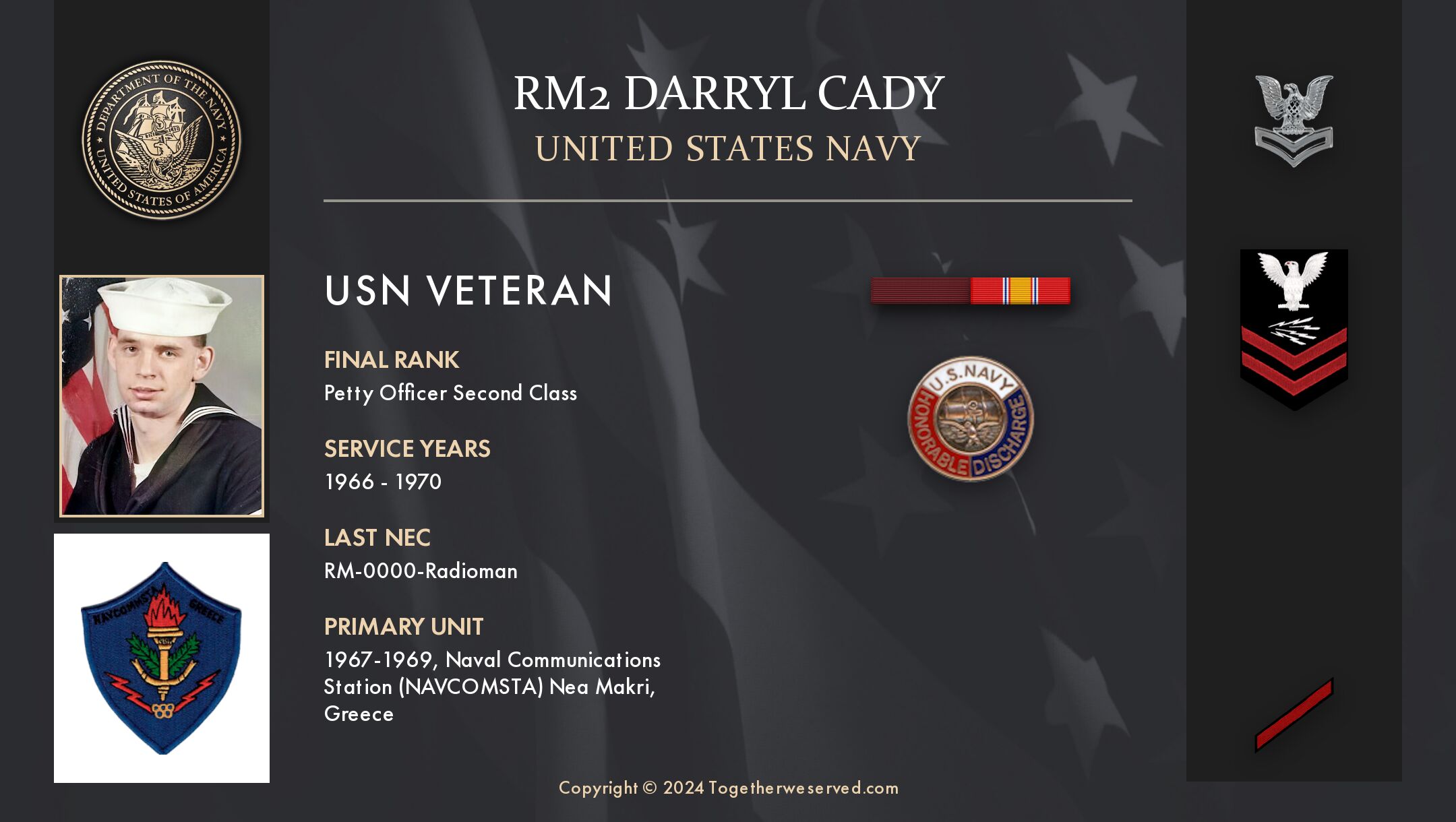
Darryl, reading your NCS Greece stories brought back many good memories of those days when I served with you. I am the LT(jg) Mise (Mize) you mentioned. I was stationed at NCS from April 1967 to November 1969, arriving in Greece one day after the April 21 Coup.
I joined the Reserves in September 1963, under an advance rating program. If you could copy CW at 25 WPM and had an Amateur Extra License (K5QWE now W0AN), you could enlist as an E3 and immediately take the 3rd class test. My Radio Chief was upset that he couldn’t send me to boot camp as an RMSN (E3) and wouldn’t let me take the 3rd class test, because I copied CW with a pencil. That was a very good reason, and I learned to type listening to CW. I was attending Kansas University at the time, and upon graduating went to OCS, as a RM3. I asked to be assigned to overseas communications and received orders to NAVCOMMSTA Greece. I was assigned as a Communications Officer (W), and as the most junior Naval officer in Greece for 15 months, inherited many collateral duties (BOQ Bar Officer, Protestant Chapel Fund, Stars and Stripes audit, Car accident investigator, Ham Station OIC, etc.)
During the 6 Day War, we were restricted to the base and had Zulu messages piled on the floor. On the morning of June 8, 1967, they sent me on a crypto courier run to the RPS office at the Athens Air Base. I went to the MAA office, they told me they couldn’t spare an armed driver, and I would have to drive my personal car (Kharman Ghia) and they issued me a side arm. When I returned from the base, I walked into our spaces and it was eerily quiet, with no one talking and only the sound of the RTTY machines. I asked one of my Radiomen what was going on, and he said an American ship was being attacked by unknowns, which we assumed were Soviets. He said the Officers were back in Voice HICOM. I ran back there, and our Senior Chief was trying to authenticate the distress messages. Later, we found out the attack was by Isreal, and the ship was the USS Liberty. A couple of days later my watch section, on our day off, had to screen hundreds of messages for any mention of the Liberty, and box them up to be shipped back to Washington. LT Fagan told us not to ever talk about the ship or the messages. Being the most junior Naval Officer in Greece and just out of Comm School and never heard of the USS Liberty before, I didn’t think much about it. A couple of weeks later, I was again sent on a courier run to the airbase, and as I passed some warehouses, I saw two enlisted Navy braking up electronic equipment. For my High School Science Project, I built a Doppler Radar from a WW2 klystron tube mounted on a Schlitz Tall Boy beer can and recognized some of the parts they were destroying were really cool microwave parts. They said the equipment were spare parts for a ship that wouldn’t need them anymore. I told them I was the OIC of the base Ham Station (my call SV0WG), we could use the parts (many TMC tubes and meters, in addition to the microwave waveguides), and to load up the Navy Van. Work and marriage got in the way and the parts sat in the corner of the station, until I was leaving and the XO told me to get rid of them. They sat in my garage in Colorado for 50 plus years. Most are for the TRSSCOMM (Technical Research Ship Special Communications) L-Band – 1.7 GHz System, which used the moon for high data rate link bounce from the Liberty to the National Security Agency or the X-Band (10 GHz) surveillance system.
For the last several years, I have volunteered at the Veterans Museum in Broomfield, Colorado, where I have an exhibit describing the U.S.S. Liberty, with some of those parts on display, including the history of Signals Intelligence (SIGINT) from the Civil War through the Cold War.
After my tour at the NCS, I returned to KU, earned an Electrical Engineering Degree, worked at Hughes Aircraft on the F14 Phased Array Radar antenna and various satellite antennas, Ball Aerospace on the Tomahawk cruise missile altimeter antenna and SEASAT satellite antenna, and Lockheed, at the Buckley Satellite ground station. I transferred to the Naval Security Group, where I retired with 26 years active and reserve time as a CDR.
I visited NCS about 8 years ago, which is now used by the Nea Makri Fire Department. Nearby is a museum that was built by the Greek Government for the Olympics. One of the employees there told my wife, who is Greek, that he will always remember Christmas at the Base, because of the wonderful parties they had, and the presents the Navy gave to the Greek kids.